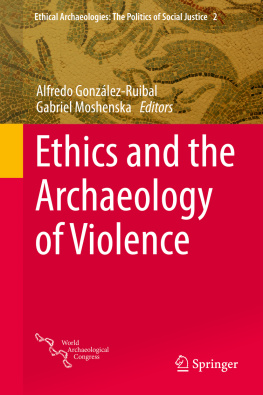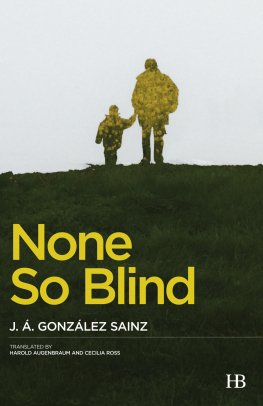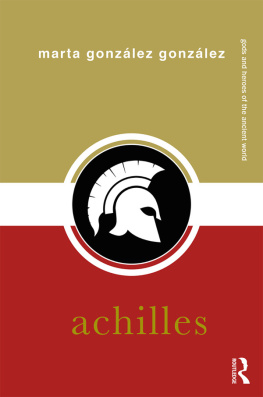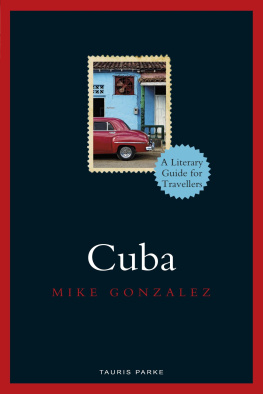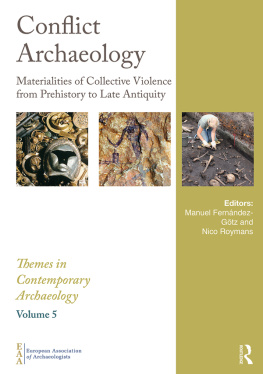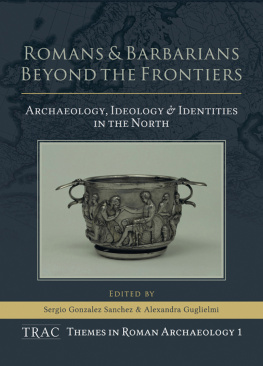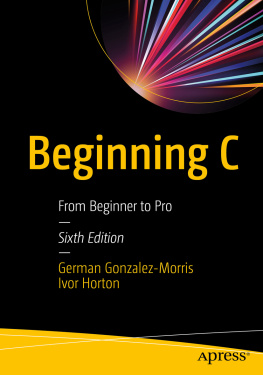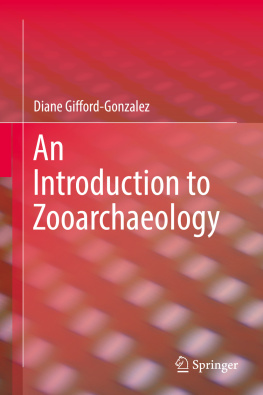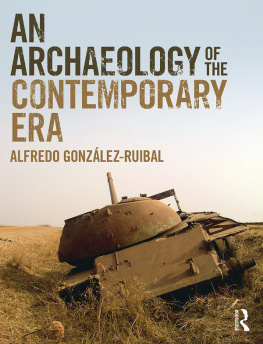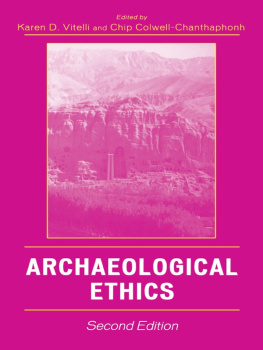Introduction
Working in conflict and post-conflict environments presents a number of distinctive challenges for archaeologists. While all archaeological work involves risks and uncertainties, these are amplified and exacerbated in contexts of physical and structural violence. Elements of archaeological practice that are usually thought of as reasonably routine, such as health and safety and site security, can become extremely problematic. Meanwhile the aspects of archaeological work that are generally understood to be problematic, such as the recovery of human remains and working with indigenous communities, are imbued with even greater significance and risk. Those of us who practice what we would regard as socially aware, reflexive archaeology have become accustomed to considering the wider political, economic and social contexts and implications of our work, and building these considerations into our praxis. Archaeologies of violence transform these critical practices from an intellectual exercise into a practical necessity: in a few cases a matter of life and death. In this context it is reasonable to argue that archaeologies of violence require a uniquely comprehensive and critical approach to ethics.
Ethics, and specifically applied ethics, is concerned with establishing right and wrong in human behaviour. The ethical project in archaeology has a long and turbulent history: we are confident that the volume and ferocity of ethical debate is a measure of its good health. Most ethical considerations in archaeology are implicit rather than explicit, but in hazardous environments it is vital that an open and critical ethical discourse be allowed to exist, and that archaeologists approach their work with as clear-sighted a view as possible of its likely implications and effects. As an intellectual community we have a common interest and responsibility to maintain a critical and productive ethical discourse.
The papers in this book are contributions to this ongoing discussion, providing insights into the cutting edge of theory and practice in the ethics of archaeologies of violence. Our aim in assembling these papers has been to draw on case studies from around the world, including historical and contemporary examples, to illustrate the complexities and conundrums of this field. In turn we hope that the papers in this book will be of value to archaeologists working in conflict and post-conflict environments, offering insights based on others often hard-earned experience. At the same time we want to stimulate debate around archaeological ethics in the widest possible sense, based on the belief that ethics should lie at the heart of archaeological practice rather than being tagged on as an afterthought. The case studies in this book illustrate the hurt, harm, uncertainty and anguish that can result from archaeologies of violence. Our overarching aim for this book is that it can contribute in some small way to the amelioration of these effects in future archaeological work.
Background
The intellectual context from which this book emerges combines two of the most exciting and dynamic threads in archaeological thought over the last decade: the archaeological study of recent and modern conflicts, and the growing concern with the ethics of archaeological practice. These trends are worth examining in a little more detail.
Archaeologies of Violence
The study of violence in the archaeological record is not a new idea. The venerable discipline of battlefield archaeology has formed the basis for wide ranging studies of the artefacts, sites and landscapes of violent conflict, ranging from prehistory to the American Civil War. As battlefield archaeology has evolved it has come to include detailed analyses of human remains and interdisciplinary approaches to combat landscapes (Carman and Carman ). From heritage management came the idea that even recent material remains of conflict were worthy of protection, preservation and recording. From material culture studies and anthropology came ever more sophisticated interdisciplinary approaches to violent heritage as the traces of human agency and interaction, as well as the emerging idea of material agency. From forensic science and criminology came the idea that bodies have stories to tell and that these can serve a therapeutic and commemorative purpose as well a legal one. Finally, the idea that archaeological techniques and concepts could be applied to the very recent or contemporary past has had significant impacts, as researchers have been drawn towards the study of the material manifestations of contemporary processes of oppression and violence. This has also encouraged a more holistic view of the archaeology of violence that recognises the ways in which conflicts affect every dimension of a society: we have moved a long way from the battlefield, into the workplace, the home and the everyday. Two of the most significant outcomes of this process of interdisciplinary growth and evolution have been the widening of the category conflict to include both physical and structural violence; and the understanding that archaeological studies of violent episodes in the past share many important features with archaeological work taking place amidst ongoing violence: not least in their common ethical problems.
So far, we have briefly traced the intellectual genealogy of the field, but it would be a mistake to think that the archaeology of contemporary violence is a topdown process (from academia to society). Given the social and political relevance of this research, in many contexts it has been the reverse: members of grassroots associations, victims and victims relatives, rather than researchers, have been the first to call attention to sites of conflict, often because they or their relatives were victimised there. This is the case in Argentina, for instance (see Salerno and Zarankin ).
Archaeological Ethics
Studies in archaeological ethics over the past decade have seen considerable growth in a number of key areas, and a general expansion and development of the field as a whole. Of particular note are the increased (but by no means universal) levels of intellectual sophistication in discussions of archaeological ethics, as archaeologists have begun to engage with philosophers and scholars in related fields such as bioethics (Colwell-Chanthaphonh and Ferguson ), and by a growing number of articles.
It is worth wondering, however, why it has taken so long to the discipline to develop a profound reflection on ethics (beyond deontology), if compared with other fields, such as anthropology, where debates had already started in the 1970s (Jorgensen ). Despite these developments there is a growing sense that while some of the relationships between archaeologists and indigenous peoples have improved in recent years, the main structural inequalities remain intact and the form and forums of these dialogues have changed little in the last quarter of a century or more.

